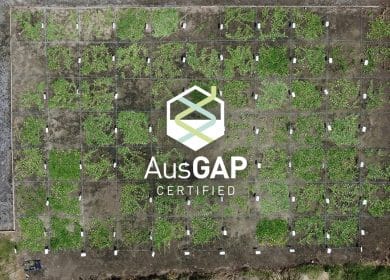
Fatigue has become an increasing concern affecting various aspects of our lives. It not only poses a threat to individual wellbeing but also has significant implications for workplace safety and productivity. This is especially true in physically demanding industries such as turfgrass management, where the wellbeing of workers is crucial for the overall success of the sector. In this blog we will explore the concept of fatigue, its impact on workers, and shed light on its implications for the turfgrass industry.
What is fatigue?
Fatigue can be understood as a biological drive for restorative rest. It can stem from both mental and physical causes and can have corresponding consequences in both domains. The definition provided by Safe Work Australia, states that “fatigue is more than feeling tired and drowsy. It is mental or physical exhaustion that reduces your ability to work safely and effectively. It can also have serious short and long-term health effects on workers.”
How does fatigue affect workers?
Fatigue can have a overwhelming impact on workers. Both in terms of their personal lives and their professional performance. The effects of fatigue can be felt across physical, mental, and emotional dimensions. Physically, fatigued workers may experience decreased stamina, coordination, and strength, making them more prone to accident and injuries. Mentally, fatigue impairs cognitive functions such as attention, memory, and problem solving, which can hinder decision making abilities and lead to errors or poor judgement. Emotionally, it can contribute to increased irritability, mood swings, and decreased motivation, further diminishing work performance and satisfaction.
How does this affect the turfgrass industry?
The turfgrass industry relies on a skilled and motivated workforce to maintain the aesthetic appeal and functionality of turfgrass spaces. Here is how fatigue affects the turfgrass industry:
- Quality of turfgrass maintenance: Fatigue induced errors and reduced attention to detail can compromise the quality of turfgrass maintenance. Inadequate mowing, incorrect fertilisation, or ineffective pest management can result in subpar turf conditions and unsatisfied clients. Maintaining a high standard of turfgrass quality is crucial for attracting and retaining customers in a competitive market.
- Safety concerns: Fatigue related accidents and injuries have serious consequences for both workers and the reputation of turfgrass businesses. Prioritising fatigue management helps mitigate safety risks and fosters a safer work environment.
- Workforce retention and attraction: Exhaustion can contribute to burnout and job dissatisfaction, leading to high turnover rates within the turfgrass industry. Exhausted workers may seek employment in less physically demanding sectors, causing a loss of experienced personnel and creating challenges in recruiting skilled individuals. By addressing these concerns, turfgrass organisations can enhance employee retention and attract new talent.
How can we address fatigue in the turfgrass industry?
Recognising the significance of fatigue in the turfgrass industry, it is crucial to implement strategies to mitigate its impact and promote worker wellbeing. Here are a few measures that can be taken:
- Education and awareness: Raising awareness about the signs and consequences of exhaustion is essential. Providing workers with information about the importance of proper sleep, rest breaks, and healthy lifestyle habits can help them recognise and address exhaustion related issues.
- Establishing fatigue management policies: Turfgrass businesses should develop comprehensive fatigue management policies that address working hours, rest breaks, and shift scheduling. These policies should prioritise adequate rest periods, limit consecutive work hours, and consider factors such as weather conditions and workload variability.
- Promoting a workplace safety culture: Employers can foster culture that values the health, safety, and wellbeing of their workers. This can be achieved by encouraging open communication, providing access to resources for managing stress and exhaustion, and promoting work-life balance.
- Technological advancements: Embracing technological advancements can help alleviate the physical burden on workers and reduce fatigue related risks. Automation and mechanisation can streamline repetitive and physically demanding tasks, allowing workers to focus on more complex responsibilities.
Fatigue poses significant challenges to the turfgrass industry, impacting the wellbeing of workers, the quality of turfgrass maintenance, and overall business success. By implementing proactive strategies to address exhaustion, turfgrass organisations can prioritise worker safety, improve productivity, and enhance the industry’s reputation. Furthermore, by addressing fatigue, we can create a safer, healthier, and more efficient turfgrass sector that thrives in the face of challenges and continues to provide for our growing population’s needs.


